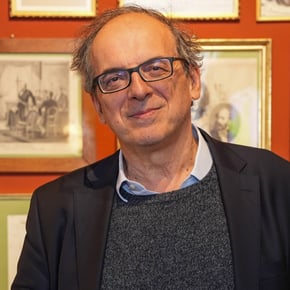A pioneering new approach to bioarchitecture harnesses cyanobacteria to turn the surfaces of buildings into active CO₂ sequestration systems. Thanks to a living “coating” developed by ETH Zurich, urban architecture can play a part in the fight against climate change.
In the not-too-distant future, buildings might be covered with what could be called a “living coating” containing cyanobacteria: extremely old marine bacteria that perform photosynthesis, like plants. It binds carbon dioxide from the air more efficiently than any other coating yet created.
What’s more, this living coating seems to be capable of strengthening the structures of the surfaces on which it is spread. It has been developed by researchers from ETH Zurich, who published their proposal – complete with technical data – in the scientific journal Nature Communications and then presented it at Venice Biennale and the Triennale in Milan, in two separate demonstration installations.
The coating consists of a hydrogel (a soft material with a high water content) with a cross-linked structure that lets through water, nutrients and light, all of which are needed for photosynthesis. The cyanobacteria are embedded in the hydrogel. They survive by absorbing CO₂ and water, then using the energy from sunlight to transform them into oxygen and carbohydrates (sugars).
3D printing for peerless surface coatings
The hydrogel contains artificial seawater (as mentioned above, cyanobacteria are essentially marine organisms) and nutrients, for maximum efficiency.
The material is shaped using 3D printing processes, in order to make the most of the cyanobacteria’s capabilities and provide the best possible coating for each wall or surface.
As well as using carbon dioxide for photosynthesis, the cyanobacteria transform it into minerals like carbonates (similar to limestone), which are deposited inside the hydrogel and reinforce it mechanically.
Tests showed that the “living coating” remained fully efficient for at least 400 days, during which time it bound 26 milligrams of CO₂ per gram of hydrogel. In comparison, the figure for recycled concrete – another material capable of capturing CO₂ – stands at just 7 milligrams.
The green solutions are on display in Venice and Milan
As mentioned above, this experimental project has been taken to the Venice Biennale for the Picoplanktonics installation in the Canada Pavilion. It features structures resembling tree trunks, the largest of which is three metres tall and capable of binding 18 kg of CO₂ per year: roughly as much as a 20-year-old tree in the same climate zone. The installation is operational, with monitoring to ensure the environmental conditions are optimal. It will remain on display until 23 November.
Meanwhile at the Triennale in Milan, the “living coating” can be seen in Dafne’s Skin, as part of an exhibition entitled “We the bacteria: Notes Toward Biotic Architecture”.
It covers the surface of shingles: a wooden alternative to ceramic roof tiles.




